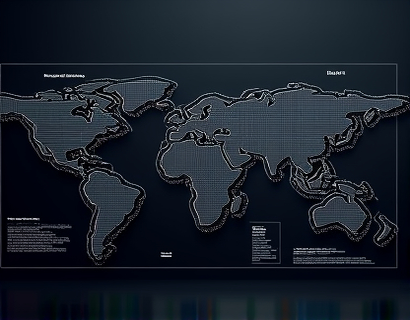Advanced Software Solutions in Graph Theory and Fluid Dynamics: Enhancing Research and Innovation
In the realm of mathematical modeling and fluid mechanics, the integration of advanced software solutions has revolutionized the way researchers and engineers approach complex problems. These tools, specifically tailored for graph theory and fluid dynamics, offer unprecedented capabilities in data analysis, visualization, and system optimization. By leveraging cutting-edge algorithms and computational techniques, these software solutions empower users to uncover deeper insights and drive innovative discoveries.
Graph Theory: A Foundation for Complex Systems Analysis
Graph theory, a branch of mathematics that studies the properties of graphs, has found extensive applications in various fields, including computer science, network analysis, and operations research. In the context of complex systems, graphs serve as an ideal representation of interconnected components, where nodes denote entities and edges represent relationships or interactions. Advanced software solutions for graph theory enable researchers to model and analyze these systems with greater precision and efficiency.
One of the key features of these software tools is their ability to handle large-scale graphs, which are common in real-world applications such as social networks, transportation systems, and biological networks. Algorithms for graph traversal, shortest path finding, and community detection are optimized to run on powerful hardware, allowing for rapid processing of extensive datasets. This capability is crucial for researchers who deal with massive networks where manual analysis is impractical.
Enhanced Visualization Techniques
Visualization plays a pivotal role in understanding complex graph structures and dynamics. Advanced software solutions offer sophisticated visualization tools that transform abstract data into intuitive graphical representations. These visualizations help researchers identify patterns, anomalies, and trends that might otherwise go unnoticed. Interactive visualizations allow users to explore different aspects of the graph, such as node properties, edge weights, and clustering coefficients, providing a comprehensive view of the system under study.
Moreover, these tools often include features for dynamic visualization, enabling the observation of graph evolution over time. This is particularly useful in studying temporal networks, where relationships between nodes change dynamically. By visualizing these changes, researchers can gain insights into the underlying mechanisms driving the network's behavior, leading to more accurate models and predictions.
Fluid Dynamics: Simulating Complex Fluid Behaviors
Fluid dynamics, the study of fluids in motion, is essential for understanding a wide range of phenomena, from weather patterns to the flow of liquids in industrial processes. The complexity of fluid behavior necessitates the use of advanced computational methods and software solutions to simulate and analyze these systems accurately. Modern software tools for fluid dynamics incorporate sophisticated numerical methods and high-performance computing capabilities to tackle challenging problems.
Finite Element Method (FEM) and Computational Fluid Dynamics (CFD) are two prominent approaches used in fluid dynamics simulations. These methods discretize the domain into smaller elements or grid points, allowing for the approximation of complex partial differential equations that govern fluid flow. Advanced software solutions optimize these algorithms to run efficiently on parallel computing architectures, significantly reducing computation time and enabling the simulation of large and intricate systems.
Multiphysics Simulations
Many real-world problems involve multiple physical phenomena interacting simultaneously, such as fluid-structure interaction, heat transfer, and chemical reactions. Advanced software solutions support multiphysics simulations, where different physical domains are coupled and solved concurrently. This integrated approach provides a more comprehensive understanding of the system, as it accounts for the interdependencies between various physical processes.
For instance, in aerospace engineering, simulating the flow around an aircraft wing while considering structural deformations and thermal effects can lead to more robust and efficient designs. The ability to perform such comprehensive simulations is a significant advantage, as it reduces the need for extensive physical prototyping and testing, saving both time and resources.
Optimization and Performance Enhancement
Optimizing the performance of complex systems is a critical aspect of both graph theory and fluid dynamics research. Advanced software solutions offer powerful optimization tools that help users find the best configurations or parameters for a given problem. In graph theory, this might involve optimizing network flow, minimizing latency in communication networks, or maximizing coverage in sensor networks. In fluid dynamics, optimization can focus on reducing drag, improving mixing efficiency, or enhancing heat transfer rates.
These tools often incorporate advanced optimization algorithms, such as genetic algorithms, particle swarm optimization, and gradient-based methods, which are tailored to handle the specific challenges of each domain. By automating the optimization process, researchers can explore a vast solution space and identify optimal or near-optimal solutions with greater efficiency.
Case Studies and Applications
The practical applications of advanced software solutions in graph theory and fluid dynamics are diverse and impactful. In the field of social network analysis, researchers have used graph theory tools to study the spread of information and influence within large communities, leading to better strategies for marketing and public health campaigns. In transportation planning, graph-based optimization has been instrumental in designing efficient routes and schedules for public transit systems, reducing congestion and improving service quality.
In fluid dynamics, these software solutions have been applied to a wide range of industries, from automotive and aerospace to chemical and environmental engineering. For example, in the design of more fuel-efficient vehicles, CFD simulations help engineers optimize aerodynamic shapes and reduce drag, leading to significant fuel savings. In environmental studies, fluid dynamics models assist in predicting and mitigating the impacts of pollution and climate change by simulating the dispersion of pollutants in air and water.
Future Directions and Emerging Trends
The field of advanced software solutions for graph theory and fluid dynamics is rapidly evolving, driven by advancements in computational power, algorithmic innovations, and the increasing availability of big data. One emerging trend is the integration of machine learning techniques with traditional computational methods. By combining the strengths of both approaches, researchers can develop more accurate and adaptive models that learn from data and improve over time.
Another area of growth is the development of user-friendly interfaces and cloud-based platforms that make these powerful tools accessible to a broader audience. This democratization of advanced computational resources enables researchers and engineers from various disciplines to leverage these technologies, fostering interdisciplinary collaboration and innovation.
Conclusion
The synergy between advanced software solutions and the fields of graph theory and fluid dynamics has opened new frontiers in mathematical modeling and engineering design. By providing researchers and engineers with robust tools for data analysis, visualization, and optimization, these software solutions are driving significant advancements and discoveries. As technology continues to evolve, the potential for further innovation and impact in these domains remains vast, promising a future of enhanced understanding and performance optimization across multiple industries.










































